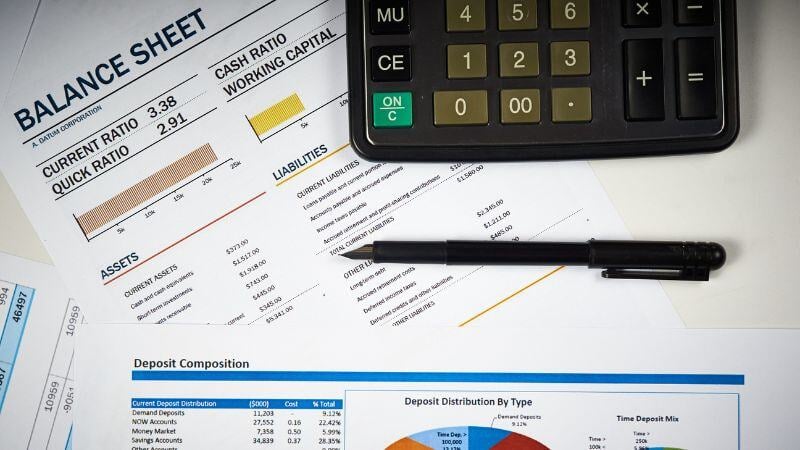Strengthening Your Balance Sheet for Better Bonding and Banking
Many contractors don't realize how important their balance sheet is until they need a bond or are applying for a loan. That's when the underwriter starts asking specific questions about your financial position, and you wish you'd been more proactive about managing your balance sheet throughout the year.
I recently had the opportunity to present to a group of construction professionals about strategies to improve balance sheets for bonding and banking purposes. As a CPA who has spent 26 years in public accounting (with six years working in the private sector with contractors), I've seen firsthand how a few strategic adjustments can dramatically impact bonding capacity.
The Importance of Reliable Financial Statements
One thing I always emphasize, which I learned from my mentor Bill Chambers, is the critical importance of reliability in your financial statements. Sureties and banks consistently tell me this is their biggest concern - they receive financial statements without WIP schedules or with under/over billings that haven't been properly adjusted. If your under/over billings aren't adjusted, you don't know where your bottom line truly is.
Key Areas to Focus On
Cash Management
Cash is king! When trying to get a bond or loan, cash holds ten times more weight than receivables, underbillings, prepaid expenses, or inventory. Some strategies to improve cash position include:
- Looking for favorable payment terms or discounts
- Offering favorable terms to customers to turn AR over quicker
- Avoiding investment options that lock up cash for more than a year
- Having a letter of credit available for jobs when needed
Managing Receivables and Retainage
Bill as quickly as possible and accelerate collections to the extent you able. While "paid when paid" clauses and architect approvals can slow things down, implement stricter credit controls and regularly review aging reports to chase down payments over 90 days.
With retainage, look for the most favorable terms in your contracts and pursue early releases aggressively. The faster you can finish projects and collect retainage, the better your balance sheet will look.
Understanding Underbillings and Overbillings
Underbillings (costs and estimated earnings in excess of billings) are generally viewed negatively by sureties. They can indicate overestimated profits, issues with change orders, or simply poor billing practices. Avoid underbillings whenever possible.
Overbillings (billings in excess of costs and estimated earnings) are generally favorable, suggesting conservative cost estimates. Front-loading your billings where possible allows the contract owner to finance the job rather than you financing it for them.
Good Debt vs. Bad Debt
Not all debt is bad! Using debt for income-generating assets (equipment, etc.) is good debt. Avoid short-term, high-interest liabilities that don't contribute to company growth. Consider refinancing your line of credit to a term loan to shift the majority of the balance to long-term.
Fixed Assets
Regularly assess what equipment you actually need. Do not purchase unneeded equipment just for income tax savings. Sell or lease idle equipment rather than letting it sit in your shop. Properly account for depreciation to reflect true asset values.
Other Balance Sheet Considerations
- Ensure cash surrender value of life insurance is on your balance sheet
- Keep inventory levels down, as sureties typically discount them by 50%
- Subordinate related party loans to improve working capital calculation
- Consider the impact of ESOPs and lease liabilities on your balance sheet
A Real-World Example
I shared an example balance sheet showing how various strategies can transform bonding capacity. In the example, a contractor started with $785,000 in working capital, which would theoretically provide $7.85 million in bonding capacity. However, after the surety's discounts for items like receivables over 90 days, prepaid expenses, and notes receivable from stockholders, the working capital dropped to just $285,000 (including cash surrender value), reducing bonding capacity to $2.85 million.
By implementing 13 different strategies in this example - from collecting old receivables to financing equipment instead of paying cash just to name a couple - the contractor could potentially increase bonding capacity from $2.85 million to $19.8 million! These are theoretical, ideal examples, but if just one applies to your situation, then you have the potential to increase your bonding capacity. Contact us for the full list of strategies.
What Sureties and Banks Look For
Sureties
- GAAP financial statements with reliable WIP schedules
- Adequate working capital and equity
- Cash is king
- Net overbillings are favorable; underbillings are concerning
- Continuity plans for the business
- Key ratios: working capital times 10, equity times 20
Banks
- Increased equity through retained profits
- Diversified revenue streams
- Minimized distributions
- Reduced debt and improved cash flow
- Key ratios: debt-to-equity (1.5 or lower), current ratio (above 1), debt coverage ratio (1.5 or higher)
Final Thoughts
In today's construction environment, with project costs skyrocketing, it's more important than ever to maximize your bonding capacity. A school that cost $25 million to build 20 years ago might cost $100 million today, so you need much more bonding capacity for the same type of project.
By focusing on increasing working capital through better cash flow management, using debt wisely, maximizing fixed assets, and monitoring financial ratios, you can dramatically improve your bonding and banking relationships. Remember to keep a long-term perspective on financial health – what makes sense for bonding today might not be what you want 10 years from now.

